Activity Areas for Family Day Care Educators
Published on Monday, 23 January 2023
Last updated on Tuesday, 24 January 2023
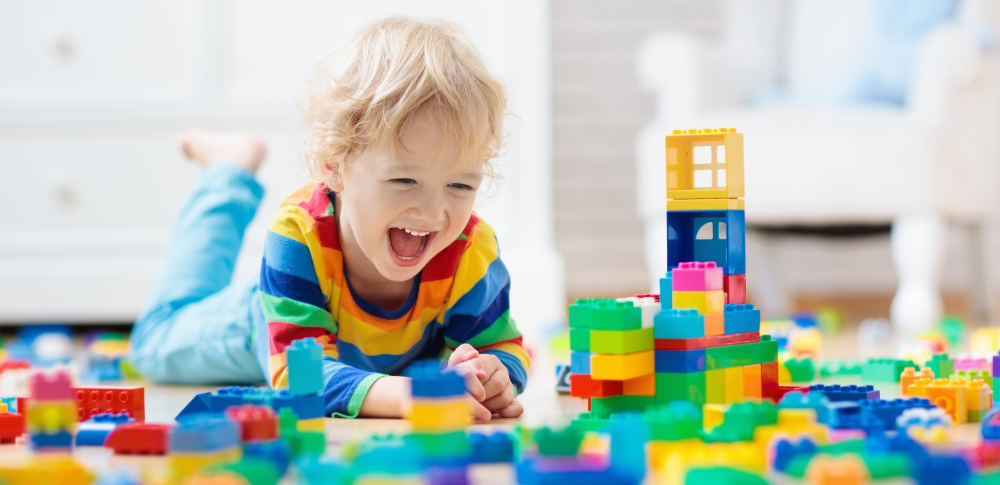
Activity Areas for Family Day Care Educators
For family day carers looking after children in their own home, the start of the year is a great time to look at reorganising and refreshing current practices. If you are looking for some fresh ideas for the New Year on how to entertain and educate the children you care for check out the tips we have for you!
Planning Activity Areas
Have a critical look at your activity areas and have a think about how you could update what you offer. Activity areas for children should include a place for messy play, like art, water activities and sensory play, a place for loud, active play, like jumping, rolling, and dancing and of course, a space for working or playing quietly. There are many activities to incorporate into your Family Day Care environment, and while each one doesn't need a dedicated space, you're going to want as many places to fin in fun like pretend play, quiet time, eating and resting. We've outlined a few of spaces you might like as dedicated areas in your Family Day Care.
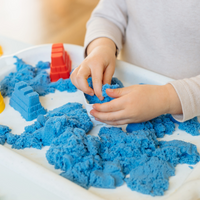 A Place for Messy Play
A Place for Messy Play
Children may enjoy messy play more if they sit in chairs or on the floor. Messy play is safest and easiest to clean up in the kitchen, or it can be done outside in good weather. Think about including some of the following things:
- Dish pans or wash tubs, paint brushes, paints, shaving cream, food coloring, magic markers, paper, towels, and kitchen utensils
- A sink nearby for washing up
- Sponges and wash cloths so the children can help clean
- A low table with chairs or a regular table with cushions or children's seats on the chairs so children can use the table comfortably
- Towels to mop up water on the floor
- Old sheets or drop cloths (or newspapers) to put under messy activities and keep children from slipping
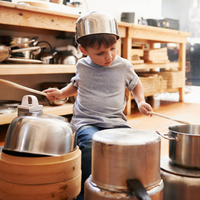 A Place for Loud, Active Play
A Place for Loud, Active Play
Set aside time daily for boisterous play and consider including some of the following things to ensure kids have a great time and burn lots of energy. Children need to move a lot. Regularly change the way you set up your activity space to keep it interesting for the children. If you have enough room, a living room or garden would be a good place for active play. Noisy play should be away from your quiet space but where you can watch and supervise the children.Consider popping some of these in to your areas:
- Mattress, pillows, or cushions for jumping
- Blankets for hiding and rolling in
- Scarves for running and dancing with
- Boards for making balance beams and ramps
- A radio or stereo for music to dance to
- A big, open space to move in
- Pots and pans
 A Place for Quiet Play
A Place for Quiet Play
The quiet work space could be a corner in the kitchen, so you can watch children while you make a snack. Or you could use a peaceful corner in the lounge.
Put toys on a low shelf or in boxes, baskets or buckets on the floor, so children can find toys easily. If you put the toys in the same place each day, the children will remember where to find them. Put the same type of toy in the same box each day. Try and keep this area away from the noisy play place. Consider some of the following things, keeping your age brackets in mind and of course, supervision is imperative when children are playing with small objects.
- Large beads, buttons and spools
- Puzzles, pegs
- Blocks, stacking toys or cups
- A rug or table with chairs for sitting
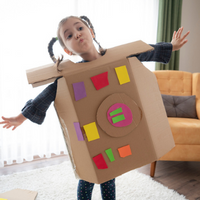 A Place for Pretending
A Place for Pretending
This space should be away from noisy areas, but with pretend play and a little bit of encouragement, it could turn into one! It could be in a corner or behind a couch. Consider including any of the following and anything else the kids will find interesting:
- Large cardboard boxes for making pretend cars, stoves and desks
- Old telephones
- Baskets, dolls, hats, and old clothes for dressing up
- A blanket to put over a table to make a house, cave, bus, tent, etc.
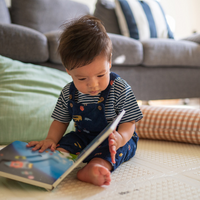 A Place to Relax Or Be Alone
A Place to Relax Or Be Alone
Use this space as your book area. Keep your books on a shelf close to the floor or in a basket so children can see them. They should also be in a place children can reach. If you have infants and toddlers, have lots of soft places for sitting, resting, looking at books, or cuddling. Use bright fabrics. Have a rocking chair to rock young children to sleep. Let older children sit and read.
Consider including some of the following things:
- Soft pillows or a mattress in a corner
- Soft pillows in a big, cardboard box
- A blanket or colorful sheet to put over a table to make a tent
- Quiet, sensory toys
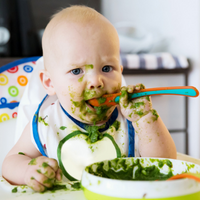 A Place to Eat
A Place to Eat
This is going to get messy, noisy and maybe even a little bit playful. Sensory play is quite common when it comes to children and food. You should have some of the following things:
- Child-size tables or regular tables and chairs with boosters
- A drop cloth or plastic tablecloth under the table to keep the floor clean
- High chairs for infants and toddlers
- A washcloth and toothbrush for each child, with his or her name on them
 A Safe Place to Sleep
A Safe Place to Sleep
You should have a quiet place for each child to sleep. The child should sleep in the same place each day. Buy sleep mats or cots if you do not have enough beds. Play quiet music so children do not hear noise from outside.
Keep up to date with all safe sleep requirements on the Red Nose Website
Reprinted with permission from the National Network for Child Care - NNCC. www.nncc.org
Miller, L. (1991). *Setting up your day care home*. (Family Day Care
Facts series). Amherst, MA: University of Massachusetts.
Related Articles

Family day care checklist
A printable checklist for families to use when visiting family day care services and considering which to choose including questions to ask and what to look for.

How to establish a family day care service
Family Day Care Australia provided information for child care educators on how to establish a family day care business at home, including costs and things to consider.

Family day care 2.0 - The next generation of educators
Family Day Care Australia (FDCA) has released a study into the profile of the family day care workforce: Attracting the next generation of family day care educators.

